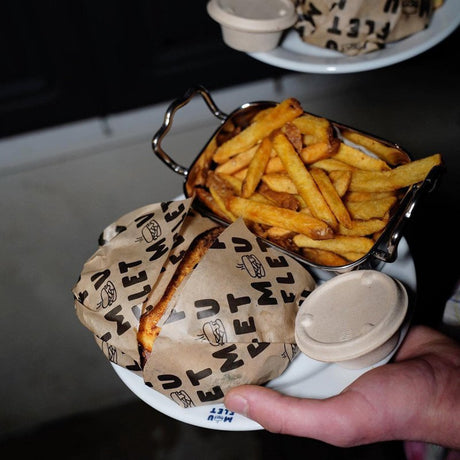How to Know if Your Takeaway Containers Are Eco-Friendly
In an age where sustainability is more than just a buzzword, knowing whether your takeaway containers are truly eco-friendly is essential. With terms like biodegradable, compostable, and recyclable being used interchangeably, it’s easy to get confused. This guide will help you understand the key differences between materials, how each should be disposed of, and why compostable packaging is the gold standard for a circular economy.
Understanding the Most Common Packaging Materials
PLA (Polylactic Acid)
PLA is a plant-based plastic derived from renewable resources like corn starch or sugarcane. It’s compostable under industrial conditions but not biodegradable in home composts or natural environments. PLA must be sent to commercial composting facilities for proper breakdown, otherwise, it may behave like conventional plastic.
Bagasse
Bagasse is a by-product of sugarcane processing. It’s fully compostable, often suitable for home composting depending on the product's structure and additives. Bagasse is heat-resistant and ideal for hot food, making it a truly sustainable alternative to plastic or Styrofoam.
Kraft Paper
Kraft is made from wood pulp and is both biodegradable and compostable, particularly when free of plastic linings. It’s often paired with aqueous (water-based) or PLA linings for leak resistance. Kraft is popular for its natural look and minimal environmental footprint.
PE (Polyethylene) Coated Paper
Paper with PE lining is not compostable and must be processed through recycling facilities, if accepted. PE can interfere with composting and biodegradation, making these containers less sustainable overall.
PS (Polystyrene)
Often known as Styrofoam, PS is a single-use plastic that is neither biodegradable nor compostable. While technically recyclable, very few facilities accept it, and it often ends up in landfills or as litter.
PET and rPET (Recycled PET)
PET is a widely recycled plastic. rPET is PET that has been recycled, offering a more sustainable option within the plastic category. However, it is not compostable or biodegradable, and recycling must be done through the correct waste stream.
How to Dispose of Different Takeaway Containers
| Material | Disposal Method | Compostable | Recyclable | Home Compost |
|---|---|---|---|---|
| PLA | Industrial composting | ✅ | ❌ | ❌ |
| Bagasse | Home or industrial composting | ✅ | ❌ | ✅ (some) |
| Kraft (unlined) | Compost or recycling (if unlined) | ✅ | ✅ | ✅ |
| PE-lined | Recycling (if accepted) | ❌ | ✅ (some) | ❌ |
| PS (Styrofoam) | Landfill (rarely recycled) | ❌ | ❌ | ❌ |
| PET | Recycling bin | ❌ | ✅ | ❌ |
| rPET | Recycling bin | ❌ | ✅ | ❌ |
Why Compostable Packaging Is Best for the Circular Economy
Compostable packaging is designed not to last, meaning it breaks down into non-toxic, soil-enriching organic matter when disposed of correctly. Unlike recyclable plastics, which require significant energy and often degrade in quality over time, compostable packaging returns nutrients to the earth, making it the most viable solution for a true circular economy.
Made Not to Last: Packaging with Purpose
At Made Not to Last, we go beyond just offering eco-friendly products. Our packaging is:
- Made from compostable materials like bagasse and unbleached Kraft.
- Lined with aqueous (water-based) coatings, not harmful plastics.
- Printed with water-based inks that are non-toxic and safe for composting.
- Verified by TUV Austria with certifications for both home and industrial compostability.
- Supported by a sustainable supply chain—from raw materials to final delivery.
We believe sustainability is more than a checkbox. It’s about designing products that fit naturally back into the earth, without compromise.
Final Thoughts: What to Look for in Eco-Friendly Takeaway Containers
When choosing takeaway packaging, always ask:
- Is it compostable or just recyclable?
- Can it be composted at home or only industrially?
- Are the linings and inks sustainable too?
- Is the product verified by trusted certifications like TUV Austria?
Sustainable packaging isn't just about what it’s made from—it’s about how it’s made, used, and returned to nature.

